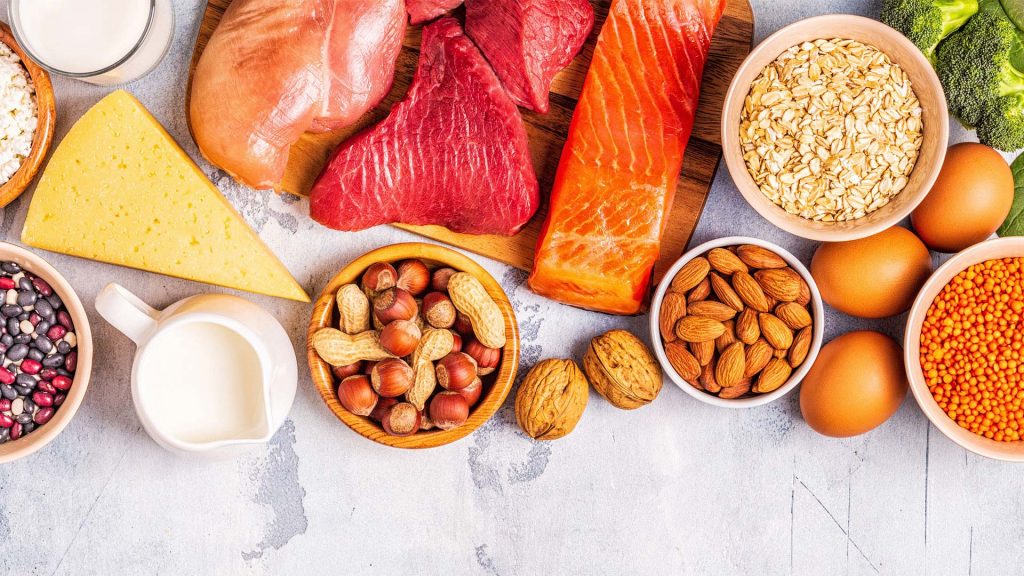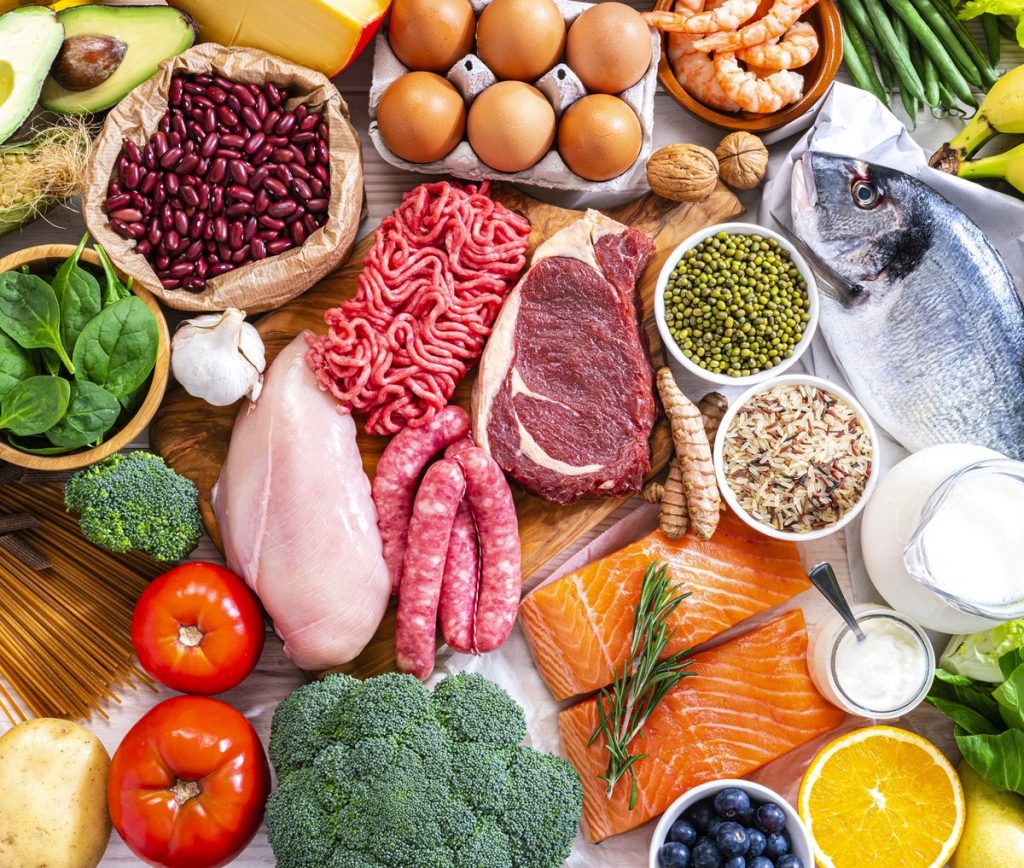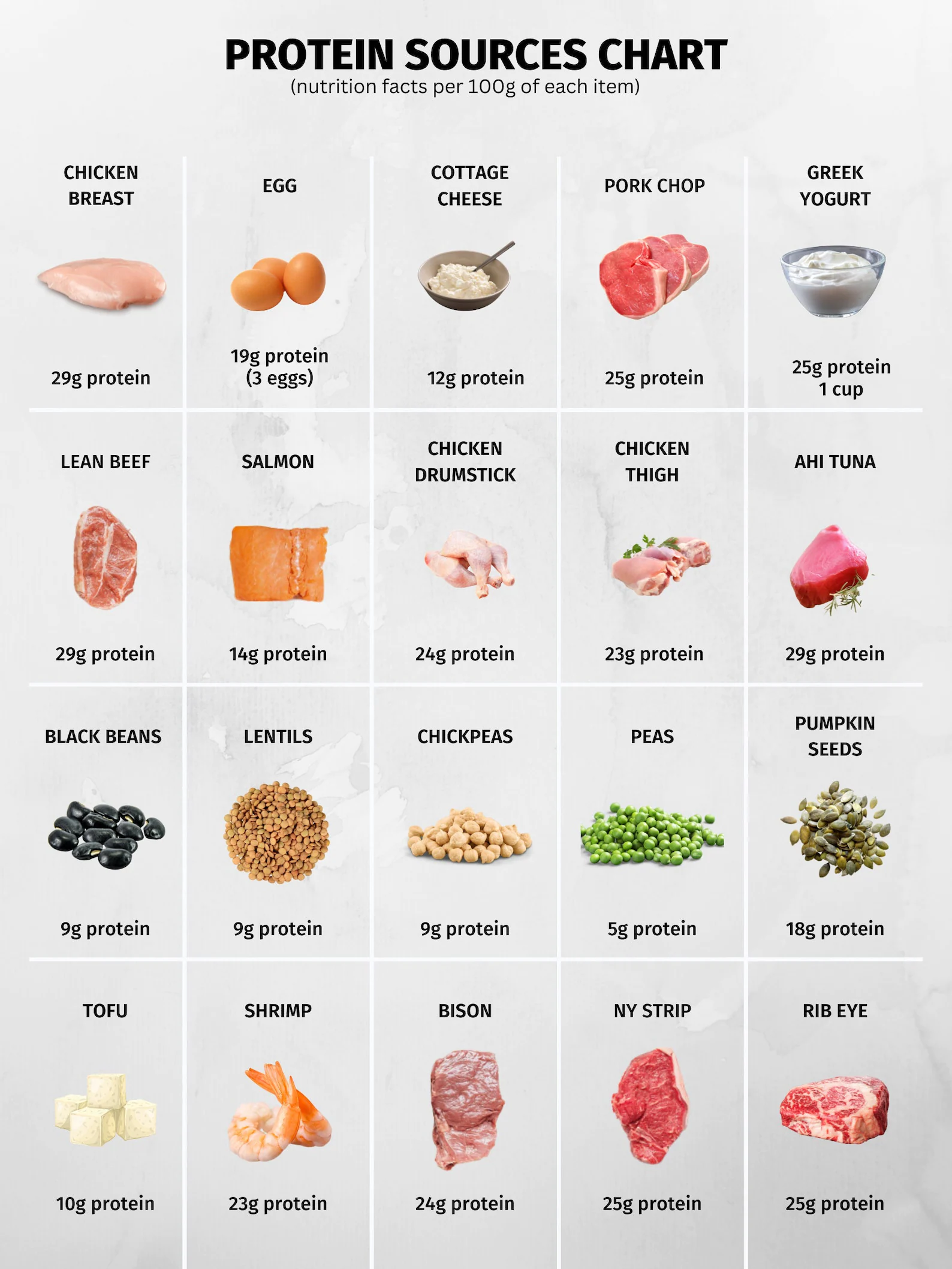
Protein
Proteins are essential for our body's health and function. They help build and repair tissues, organs, and various parts of our body like bones, muscles, and hair. Proteins are also involved in hormones, enzymes, and the immune system. Unlike fat and carbohydrates, our body doesn't store protein, so we need to consume enough through our diet.
In summary, proteins are crucial for our body's structure and function. They contribute to our overall growth, health, and various bodily processes. Consuming a diverse range of protein-rich foods ensures that we obtain the necessary amino acids for optimal well-being.

Top Tips:
-
Protein should make up 10-35% of our daily calorie intake.
Another way to calculate protein intake is to consume about 0.75-0.8 grams of protein per kilogram of body weight. Athletes, depending on their sport, may have slightly higher protein needs. For example: Strength Athletes: 1.2-1.7 grams of protein per kilogram of body weight per day, and Endurance Athletes: 1.2-1.4 grams of protein per kilogram of body weight per day.
Nutrition Info
Protein Digestion
When we eat protein-rich foods, they go through a process of digestion. In the mouth, they are crushed and moistened, but no digestion occurs there. In the stomach, hydrochloric acid breaks down proteins and unravels their structures. Enzymes like pepsin then cut the proteins into smaller units and single amino acids. In the small intestine, more enzymes break down the protein units into amino acids. These amino acids are absorbed by the intestinal cells, enter the bloodstream, and travel to the liver. From the liver, they can be distributed throughout the body to repair cells, build tissues, or be converted into glucose for energy in times of starvation.

Amino Acids
Amino acids are the building blocks of proteins. They combine to form proteins, which are essential for various body functions. There are 20 different types of amino acids in proteins.
Each amino acid has an amino group, a carboxyl group, and a side chain (R-group) that determines its properties. The sequence of amino acids in a protein determines its structure and function.
We get amino acids from protein-rich foods like meat, fish, eggs, dairy, legumes, and grains. Our body can produce some amino acids, but others, called essential amino acids, must come from our diet.
Amino acids are used to build tissues, produce enzymes and hormones, support immunity, and transport molecules in our body, among other important functions for our health.
Complete Proteins
Proteins can be classified as complete or incomplete based on whether they contain all 9 essential amino acids. Complete proteins are typically found in animal products like meat, fish, poultry, and dairy. Plant proteins often lack some essential amino acids, but by combining certain plant foods, such as grains and legumes, you can create complete protein sources.
Denaturation
Denaturation occurs when proteins are exposed to heat, acids, or other conditions that cause them to change in consistency. This means, eating proteins can help you feel full for a longer period of time. In addition to protein, fat and fibre also take a longer period of time to digest, prolonging satiety.
Denaturation can be seen when an egg hardens while being cooked (heat), when egg whites are whipped (agitation) or when milk curdles (acid) – the consistency of the food has changed.
High Protein Diets
High protein diets involve consuming more protein and calories than the body needs, which can lead to the storage of excess energy as fat. Protein digestion produces nitrogen, which is filtered out as urea through the kidneys, requiring adequate water intake to prevent dehydration.
However, there are some concerns with high protein diets:
- Higher water intake is necessary to eliminate the by-products of protein metabolism and prevent dehydration.
- High protein diets can increase calcium loss, potentially compromising bone health, especially when calcium intake is low.
- Choosing excessive high protein foods may crowd out other nutrient-rich foods, such as fruits, vegetables, and whole grains, leading to reduced intake of vitamins, minerals, and fibre.
It's important to consume a balanced amount of protein at each meal to maintain steady satiety throughout the day.
Protein Powders
Protein powders, such as whey and casein, provide amino acids but lack the additional vitamins and minerals found in protein-rich foods.
Preparing Meat
There are many ways to reduce the fat content of animal meats. Here are a few tips.
Use leaner cuts of meat:
● Beef cuts: “loin” or “round”
● Pork cuts: “loin” or “leg”
Soy Foods
Soy foods, when consumed in moderation, are a low-fat, cholesterol-free source of protein and may reduce the risk of heart disease. However, heavily processed soy products should be avoided.
Charred Meat and Cancer Risk
Cooking muscle meats at high temperatures, especially through barbecuing, can produce carcinogenic compounds that may increase the risk of cancer. To reduce exposure, it is advised to clean the grill, remove charred bits from food, use marinades with vinegar or lemon, pre-cook meat in the microwave before grilling, avoid direct contact between the flame and meat, choose lean cuts of meat, and prioritise grilled vegetables.
